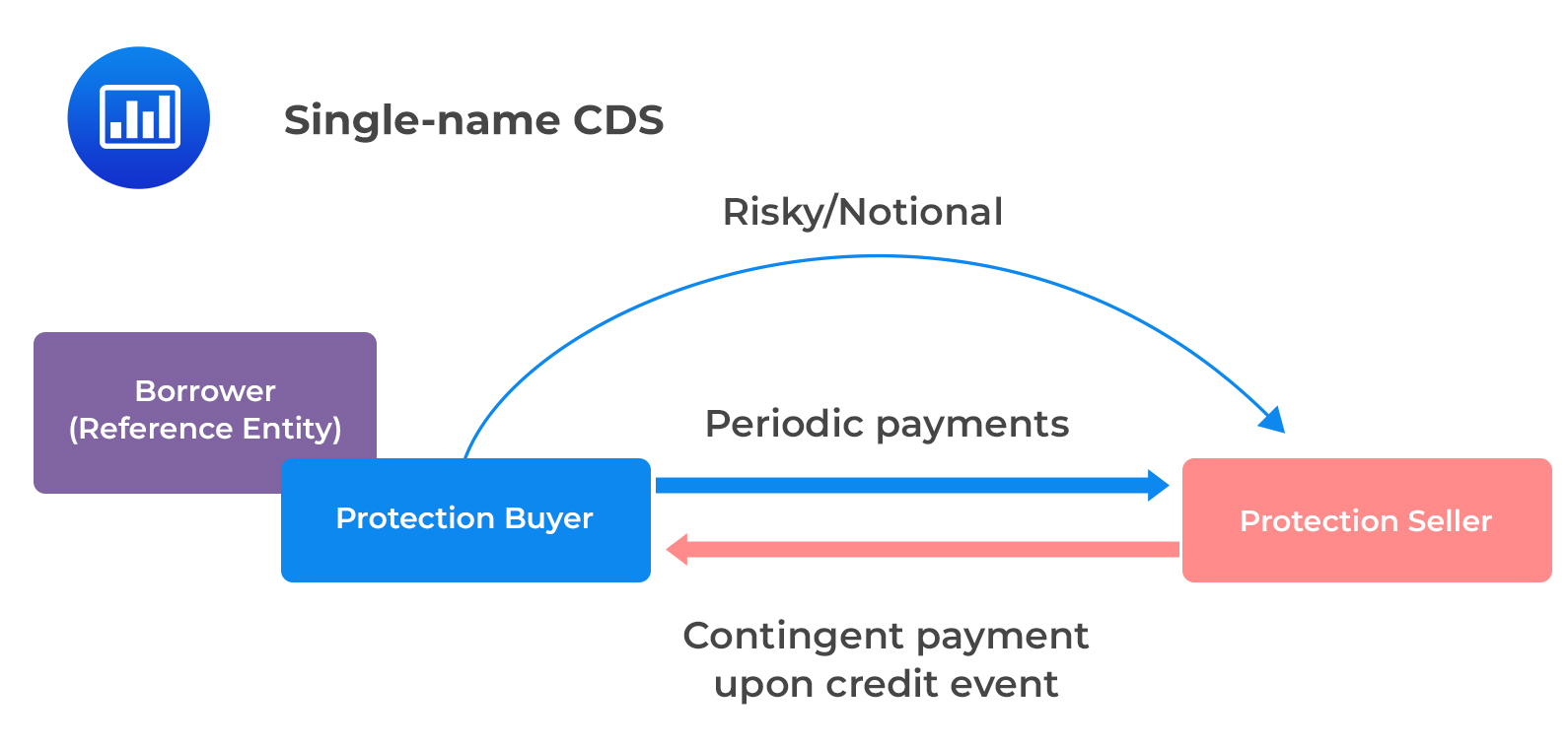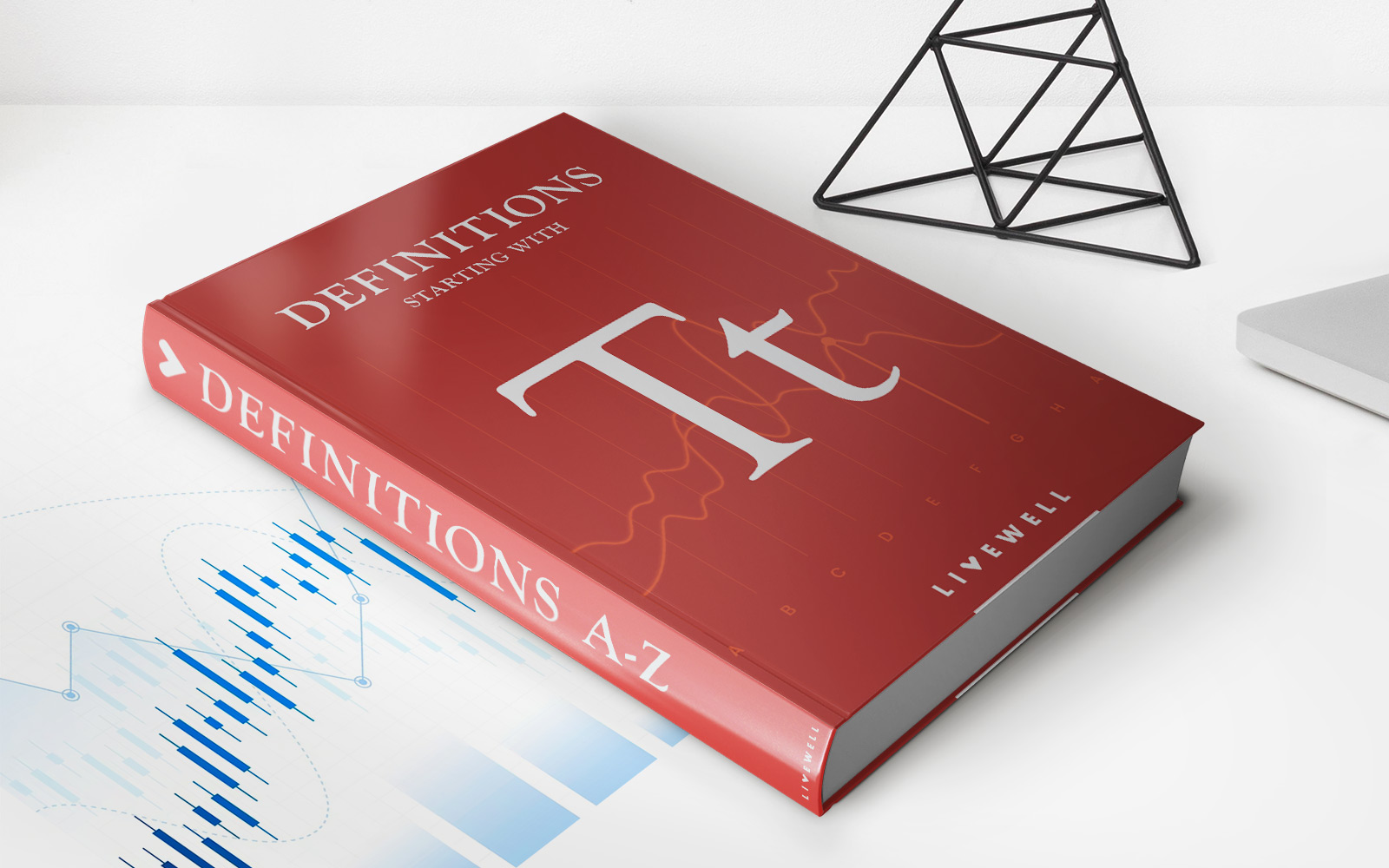Home>Finance>What Are Insurance Agency Mergers And Acquisitions


Finance
What Are Insurance Agency Mergers And Acquisitions
Published: February 25, 2024
Learn about insurance agency mergers and acquisitions in the finance industry. Understand the impact and benefits of these transactions for businesses and clients.
(Many of the links in this article redirect to a specific reviewed product. Your purchase of these products through affiliate links helps to generate commission for LiveWell, at no extra cost. Learn more)
Table of Contents
- Understanding Insurance Agency Mergers and Acquisitions
- Understanding Insurance Agency Mergers and Acquisitions
- Benefits of Insurance Agency Mergers and Acquisitions
- Challenges in Insurance Agency Mergers and Acquisitions
- Factors Driving Insurance Agency Mergers and Acquisitions
- The Process of Insurance Agency Mergers and Acquisitions
- Key Considerations in Insurance Agency Mergers and Acquisitions
- Conclusion
Introduction
Understanding Insurance Agency Mergers and Acquisitions
Insurance agency mergers and acquisitions are significant events within the financial landscape, often impacting various stakeholders, including the companies involved, their clients, and the industry at large. These transactions entail the consolidation of insurance agencies through either mergers, where two entities combine to form a new, single agency, or acquisitions, where one agency purchases another. The decision to pursue a merger or acquisition is typically driven by strategic objectives, such as expanding market reach, diversifying service offerings, or achieving economies of scale.
The insurance industry is dynamic and constantly evolving, with agencies seeking to adapt to changing market conditions, regulatory requirements, and consumer demands. As a result, mergers and acquisitions have become integral strategies for agencies to strengthen their competitive position, enhance operational efficiency, and capitalize on growth opportunities.
In this article, we will delve into the intricacies of insurance agency mergers and acquisitions, exploring the benefits and challenges associated with these transactions, the driving forces behind such strategic moves, and the essential considerations for successful execution. By gaining a comprehensive understanding of these aspects, industry professionals, stakeholders, and observers can glean insights into the dynamics shaping the insurance agency landscape and the implications of these strategic maneuvers.
Throughout this exploration, we will highlight the transformative impact of mergers and acquisitions on insurance agencies, the factors that influence decision-making, and the key considerations that underpin successful integration. By shedding light on these critical aspects, we aim to provide a holistic perspective on insurance agency mergers and acquisitions, demystifying their complexities and illuminating the strategic imperatives that drive these transformative transactions.
Understanding Insurance Agency Mergers and Acquisitions
Insurance agency mergers and acquisitions represent strategic initiatives undertaken by insurance firms to consolidate their operations, expand their market presence, and achieve various business objectives. Mergers involve the combination of two or more agencies to form a new entity, while acquisitions entail one agency purchasing another, leading to the integration of their operations and resources. These transactions are pivotal in reshaping the competitive landscape of the insurance industry, fostering synergies, and driving operational efficiencies.
One of the primary drivers behind insurance agency mergers and acquisitions is the pursuit of enhanced market competitiveness. By joining forces, agencies can leverage their combined expertise, resources, and client base to strengthen their market position and gain a competitive edge. This strategic consolidation enables agencies to offer a broader range of services, access new customer segments, and capitalize on cross-selling opportunities, thereby enhancing their overall market relevance and appeal.
Furthermore, insurance agency mergers and acquisitions often serve as vehicles for geographic expansion and market diversification. Through these transactions, agencies can penetrate new markets, establish a more extensive regional or national presence, and mitigate concentration risks associated with operating in a single market. This expansion enables agencies to tap into diverse consumer demographics, regulatory environments, and economic conditions, fostering resilience and adaptability in an ever-evolving industry landscape.
Moreover, these strategic moves are instrumental in fostering operational synergies and economies of scale. By consolidating operations, agencies can streamline administrative functions, optimize resource allocation, and reduce redundant costs, thereby enhancing operational efficiency and profitability. Additionally, the pooling of talent, technology, and best practices can catalyze innovation and drive sustained growth, positioning the merged or acquired entity for long-term success.
Overall, insurance agency mergers and acquisitions are multifaceted endeavors that transcend mere financial transactions. They embody strategic imperatives aimed at fortifying market competitiveness, expanding market reach, and fostering operational excellence. As such, understanding the intricacies of these transactions is essential for industry stakeholders and observers to grasp the dynamics shaping the insurance landscape and anticipate the transformative impact of these strategic maneuvers.
Benefits of Insurance Agency Mergers and Acquisitions
Insurance agency mergers and acquisitions yield a myriad of benefits that contribute to the strategic and operational advancement of the entities involved. These transactions serve as catalysts for transformative growth, operational synergies, and enhanced market competitiveness, offering tangible advantages that resonate across the industry landscape.
Enhanced Market Competitiveness: By consolidating their operations, insurance agencies can bolster their market competitiveness through the combined expertise, resources, and client base of the entities involved. This synergy enables the merged or acquired agency to offer a broader range of services, access new customer segments, and capitalize on cross-selling opportunities, thereby strengthening their market relevance and appeal.
Geographic Expansion and Market Diversification: Mergers and acquisitions facilitate geographic expansion, enabling agencies to establish a more extensive regional or national presence. This diversification mitigates concentration risks associated with operating in a single market and fosters resilience in the face of evolving market dynamics, regulatory environments, and economic conditions.
Operational Synergies and Economies of Scale: These transactions drive operational synergies by streamlining administrative functions, optimizing resource allocation, and reducing redundant costs. The consolidation of talent, technology, and best practices fosters innovation, operational excellence, and sustained growth, positioning the merged or acquired entity for long-term success.
Access to Specialized Expertise and Resources: Mergers and acquisitions provide access to specialized expertise, resources, and proprietary technologies, enabling agencies to enhance their service offerings, improve customer experiences, and drive innovation. This access to diverse skill sets and capabilities empowers agencies to address evolving market demands and deliver enhanced value to their clients.
Strategic Alliances and Partnerships: These transactions facilitate the formation of strategic alliances and partnerships, enabling agencies to collaborate with complementary entities and leverage synergies to achieve common business objectives. This collaborative approach fosters innovation, market expansion, and the exploration of new growth avenues, thereby enriching the competitive landscape.
Overall, insurance agency mergers and acquisitions yield a spectrum of benefits that extend beyond financial considerations, encompassing strategic positioning, operational efficiencies, and market relevance. These transformative transactions serve as pivotal instruments for agencies to fortify their competitive standing, foster innovation, and navigate the dynamic currents of the insurance industry with resilience and adaptability.
Challenges in Insurance Agency Mergers and Acquisitions
While insurance agency mergers and acquisitions offer compelling strategic advantages, they also present a range of challenges that necessitate careful consideration and adept navigation. These transactions entail complex integration processes, cultural harmonization, and operational realignment, posing inherent hurdles that demand meticulous planning and execution.
Cultural Integration: One of the foremost challenges in mergers and acquisitions is the integration of organizational cultures. Merging disparate corporate cultures, work practices, and value systems can give rise to cultural dissonance, affecting employee morale, productivity, and overall organizational cohesion. Navigating this challenge requires proactive efforts to foster cultural alignment, promote open communication, and cultivate a harmonized organizational ethos.
Operational Alignment: Integrating disparate operational processes, systems, and technologies can pose significant challenges during mergers and acquisitions. Achieving seamless operational alignment necessitates meticulous planning, robust change management strategies, and a keen focus on optimizing processes to drive efficiency and minimize disruptions to client service and internal workflows.
Client Retention and Service Continuity: Ensuring a seamless transition for clients and maintaining service continuity amid mergers and acquisitions is paramount. Client retention can be impacted by uncertainties surrounding the transaction, changes in service delivery, or perceived disruptions in the client-agency relationship. Proactively addressing client concerns, communicating transparently, and delivering uninterrupted service are critical to sustaining client trust and loyalty.
Talent Retention and Management: Retaining key talent and managing workforce transitions is a pivotal challenge in mergers and acquisitions. Employee apprehensions, role redundancies, and organizational restructuring can impact workforce morale and productivity. Implementing robust talent retention strategies, providing transparent communication, and offering professional development opportunities are essential in managing the human capital implications of these transactions.
Regulatory Compliance and Legal Considerations: Navigating the regulatory and legal landscape is a significant challenge in insurance agency mergers and acquisitions. Ensuring compliance with regulatory requirements, addressing legal complexities, and managing contractual obligations demand meticulous attention to detail and proactive engagement with legal and regulatory experts to mitigate risks and ensure a seamless transition.
Financial and Operational Risks: Mergers and acquisitions entail financial and operational risks, including cost overruns, resource misalignment, and potential disruptions to revenue streams. Mitigating these risks requires robust due diligence, financial planning, and risk management strategies to safeguard the financial health and operational continuity of the merged or acquired entity.
Addressing these challenges demands a comprehensive approach encompassing strategic foresight, meticulous planning, and proactive stakeholder engagement. By navigating these hurdles adeptly, insurance agencies can maximize the transformative potential of mergers and acquisitions while mitigating risks and fostering a seamless transition for all stakeholders involved.
Factors Driving Insurance Agency Mergers and Acquisitions
Insurance agency mergers and acquisitions are propelled by a confluence of strategic, market, and operational factors that underscore the imperative for consolidation and transformative partnerships within the industry. These driving forces encompass a spectrum of considerations that shape the strategic landscape, influence market dynamics, and fuel the pursuit of sustainable growth and competitive advantage.
Market Consolidation and Competition: The evolving competitive landscape of the insurance industry, characterized by heightened competition, changing consumer preferences, and technological advancements, drives agencies to seek consolidation as a means of fortifying their market position, enhancing their service offerings, and capitalizing on economies of scale to remain competitive.
Strategic Expansion and Diversification: The pursuit of geographic expansion, market diversification, and access to new customer segments drives agencies to explore mergers and acquisitions as strategic avenues for broadening their market reach, mitigating concentration risks, and tapping into diverse consumer demographics, regulatory environments, and economic conditions.
Operational Synergies and Efficiency: The quest for operational synergies, enhanced efficiency, and optimized resource utilization serves as a compelling driver for mergers and acquisitions. By consolidating operations, agencies can streamline administrative functions, leverage shared resources, and drive cost efficiencies, positioning the merged entity for sustained growth and operational excellence.
Technological Innovation and Adaptation: The imperative for technological innovation, digital transformation, and the adoption of advanced analytics and customer engagement platforms propels agencies to seek mergers and acquisitions as vehicles for accessing specialized technologies, fostering innovation, and enhancing their digital capabilities to meet evolving market demands.
Regulatory and Compliance Imperatives: The evolving regulatory landscape and compliance requirements within the insurance industry drive agencies to pursue mergers and acquisitions as a means of bolstering their regulatory capabilities, ensuring compliance, and navigating the complexities of regulatory changes and market dynamics with resilience and adaptability.
Capital Access and Financial Strength: The quest for enhanced financial strength, access to capital for strategic investments, and the optimization of capital structures drives agencies to explore mergers and acquisitions as avenues for bolstering their financial resilience, unlocking growth opportunities, and enhancing their competitive positioning within the industry.
These driving factors underscore the strategic imperatives, market dynamics, and operational considerations that catalyze insurance agency mergers and acquisitions. By navigating these factors adeptly, agencies can harness the transformative potential of these transactions to fortify their market relevance, drive sustainable growth, and navigate the dynamic currents of the insurance industry with agility and foresight.
The Process of Insurance Agency Mergers and Acquisitions
The process of insurance agency mergers and acquisitions encompasses a series of strategic, operational, and regulatory steps that culminate in the successful consolidation of entities and the realization of synergies and growth opportunities. This multifaceted process involves meticulous planning, due diligence, negotiation, and integration, underpinned by a comprehensive understanding of the market landscape, regulatory requirements, and operational intricacies.
Strategic Planning and Target Identification: The process commences with strategic planning, wherein agencies identify potential merger or acquisition targets aligned with their growth objectives, market expansion strategies, and operational synergies. This entails evaluating the strategic fit, cultural alignment, and growth potential of potential partners or targets.
Due Diligence and Valuation: Rigorous due diligence is conducted to assess the financial, operational, and regulatory aspects of the target entity. This involves evaluating financial statements, client portfolios, operational capabilities, regulatory compliance, and potential risks. Valuation methodologies are employed to determine the fair value of the target entity and negotiate the terms of the transaction.
Negotiation and Deal Structuring: Negotiation plays a pivotal role in determining the terms of the merger or acquisition, including the purchase price, payment structure, post-transaction roles, and contractual agreements. Deal structuring involves crafting agreements that align with the strategic objectives of the entities involved while safeguarding the interests of all stakeholders.
Regulatory Compliance and Approvals: Compliance with regulatory requirements is paramount in insurance agency mergers and acquisitions. Agencies must navigate regulatory frameworks, obtain necessary approvals, and address compliance considerations to ensure a seamless and legally sound transaction.
Integration Planning and Implementation: Post-transaction, the focus shifts to integration planning and implementation, wherein agencies align operational processes, consolidate systems and technologies, harmonize organizational cultures, and optimize resource utilization. This phase aims to realize operational synergies, drive efficiency, and foster a seamless transition for clients and employees.
Client and Employee Communication: Transparent communication with clients and employees is integral throughout the process. Maintaining open dialogue, addressing concerns, and providing clarity on the implications of the transaction fosters trust, mitigates uncertainties, and ensures a smooth transition for all stakeholders.
Post-Merger Evaluation and Optimization: Following the completion of the merger or acquisition, agencies conduct post-merger evaluations to assess the efficacy of the integration, identify areas for optimization, and refine operational strategies to maximize the value derived from the transaction.
The process of insurance agency mergers and acquisitions demands meticulous orchestration of strategic, operational, and regulatory elements to realize the full potential of the transaction. By navigating this process adeptly, agencies can unlock synergies, fortify their market position, and drive sustained growth and operational excellence in a dynamic and competitive industry landscape.
Key Considerations in Insurance Agency Mergers and Acquisitions
Insurance agency mergers and acquisitions entail a multitude of critical considerations that underpin the success and sustainability of these transformative transactions. From strategic alignment to operational integration and cultural harmonization, these key considerations encompass a comprehensive spectrum of factors that demand astute deliberation and adept navigation to realize the full potential of the merger or acquisition.
Strategic Alignment and Objectives: Ensuring strategic alignment between the entities involved is fundamental. Clarifying the strategic objectives, market positioning, and growth imperatives of the merger or acquisition sets the foundation for a cohesive and purpose-driven integration.
Cultural Compatibility and Organizational Integration: Harmonizing organizational cultures, work practices, and values is pivotal. Fostering cultural compatibility, promoting open communication, and cultivating a unified organizational ethos are essential in driving a seamless integration and sustaining employee morale and productivity.
Client Retention and Service Continuity: Prioritizing client retention and service continuity is paramount. Proactively addressing client concerns, ensuring uninterrupted service, and maintaining transparent communication are critical in sustaining client trust and loyalty throughout the transition.
Operational Synergies and Efficiency: Identifying and capitalizing on operational synergies is imperative. Streamlining administrative functions, optimizing resource allocation, and driving operational efficiency are essential in realizing the full potential of the merger or acquisition.
Regulatory Compliance and Legal Considerations: Navigating the regulatory landscape with diligence is essential. Ensuring compliance with regulatory requirements, addressing legal complexities, and mitigating regulatory risks are pivotal in safeguarding the legal and operational integrity of the transaction.
Talent Retention and Workforce Management: Retaining key talent and managing workforce transitions is critical. Implementing robust talent retention strategies, providing transparent communication, and offering professional development opportunities are instrumental in sustaining workforce morale and productivity.
Technology Integration and Innovation: Integrating and leveraging technology for innovation is pivotal. Aligning technology platforms, fostering digital capabilities, and driving technological innovation are essential in meeting evolving market demands and enhancing operational efficiency.
Post-Merger Evaluation and Optimization: Conducting thorough post-merger evaluations is integral. Assessing the efficacy of the integration, identifying areas for optimization, and refining operational strategies are essential in maximizing the value derived from the transaction.
By meticulously addressing these key considerations, insurance agencies can navigate the complexities of mergers and acquisitions adeptly, realizing the transformative potential of these transactions while safeguarding the interests of stakeholders, sustaining operational excellence, and fortifying their competitive standing in the dynamic and evolving landscape of the insurance industry.
Conclusion
Insurance agency mergers and acquisitions represent pivotal strategic maneuvers that reshape the competitive landscape, foster operational synergies, and drive transformative growth within the insurance industry. These transactions, driven by a confluence of market dynamics, strategic imperatives, and operational considerations, hold the potential to fortify market competitiveness, enhance operational efficiency, and unlock sustainable growth opportunities for the entities involved.
Amid the complexities and challenges inherent in mergers and acquisitions, agencies must navigate a multifaceted landscape encompassing strategic alignment, cultural integration, operational optimization, and regulatory compliance. By adeptly addressing these considerations, agencies can realize the full potential of these transactions, driving synergies, sustaining client trust, and fostering a seamless transition for employees and stakeholders.
Furthermore, the strategic imperatives underpinning insurance agency mergers and acquisitions underscore the industry’s resilience, adaptability, and commitment to innovation. These transactions serve as testaments to the industry’s capacity to evolve, embrace change, and capitalize on growth opportunities, positioning insurance agencies for sustained relevance and value creation in an ever-evolving market environment.
As insurance agencies navigate the intricacies of mergers and acquisitions, a steadfast focus on strategic alignment, operational excellence, and stakeholder engagement is paramount. By embracing these imperatives, agencies can harness the transformative potential of these transactions, fortifying their market position, and driving sustained growth and operational resilience in a dynamic and competitive industry landscape.
In conclusion, insurance agency mergers and acquisitions are not merely financial transactions; they embody strategic imperatives aimed at fortifying market competitiveness, fostering operational excellence, and driving sustained growth. By navigating these transformative maneuvers adeptly, insurance agencies can position themselves as resilient, innovative, and adaptive entities, poised to navigate the dynamic currents of the insurance industry with foresight, agility, and unwavering commitment to value creation.














